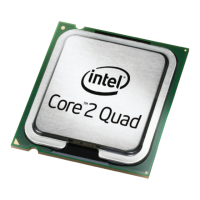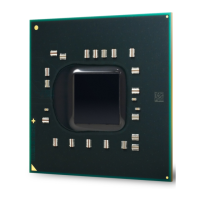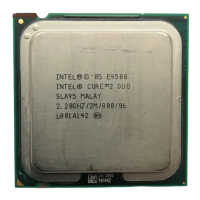Thermal and Mechanical Design Guidelines 7
Figure 49. Removing Excess Solder ...................................................................91
Figure 50. Thermocouple placed into groove .......................................................92
Figure 51. Removing Excess Solder ...................................................................92
Figure 52. Filling Groove with Adhesive..............................................................93
Figure 53. Application of Accelerant...................................................................93
Figure 54. Removing Excess Adhesive from IHS ..................................................94
Figure 55. Finished Thermocouple Installation.....................................................94
Figure 56. Thermocouple Wire Management........................................................95
Figure 57. Thermistor Set Points .......................................................................98
Figure 58. Example Fan Speed Control Implementation ........................................99
Figure 59. Fan Speed Control..........................................................................100
Figure 60. Temperature Range = 5 °C .............................................................101
Figure 61. Temperature Range = 10 °C............................................................102
Figure 62. Digital Thermal Sensor and Thermistor..............................................103
Figure 63. FSC Definition Example...................................................................105
Figure 64. System Airflow Illustration with System Monitor Point Area Identified.... 110
Figure 65. Thermal sensor Location Illustration .................................................111
Figure 66. ATX/µATX Motherboard Keep-out Footprint Definition and Height
Restrictions for Enabling Components - Sheet 1..................................
114
Figure 67. ATX/µATX Motherboard Keep-out Footprint Definition and Height
Restrictions for Enabling Components - Sheet 2..................................
115
Figure 68. ATX/µATX Motherboard Keep-out Footprint Definition and Height
Restrictions for Enabling Components - Sheet 3..................................
116
Figure 69. Balanced Technology Extended (BTX) Thermal Module Keep Out
Volumetric – Sheet 1......................................................................
117
Figure 70. Balanced Technology Extended (BTX) Thermal Module Keep Out
Volumetric – Sheet 2......................................................................
118
Figure 71. Balanced Technology Extended (BTX) Thermal Module Keep Out
Volumetric – Sheet 3......................................................................
119
Figure 72. Balanced Technology Extended (BTX) Thermal Module Keep Out
Volumetric – Sheet 4......................................................................
120
Figure 73. Balanced Technology Extended (BTX) Thermal Module Keep Out
Volumetric – Sheet 5......................................................................
121
Figure 74. Intel Advanced Liquid Cooling Technology Assembly............................122
Tables
Table 1. Heatsink Inlet Temperature of Intel Reference Thermal Solutions..............21
Table 2. Intel Liquid Cooled Reference Design Performance (ALCT).........................40
Table 3. Acoustic Results..................................................................................40
Table 4. Fan Electrical Performance Requirements ...............................................42
Table 5. Pump Electrical Performance Requirements.............................................43
Table 6. The Reliability Test Matrix ....................................................................47
Table 7. The Weekly Loss Rate of Different Tubing Materials..................................48
Table 8. Reliability Test Results.........................................................................51
Table 9. Maximum Estimated Processor Current Capability at 35 ºC External
Ambient.............................................................................................
56
Table 10. Board Deflection Configuration Definitions ............................................65
Table 11. Typical Test Equipment......................................................................72
Table 12. FSC Definitions ...............................................................................104
Table 13. ATX FSC Settings............................................................................106
Table 14. BTX Fan Speed Control Settings........................................................106
Table 15. Intel Representative Contact for Licensing Information .........................123
Table 16. Intel Reference Component ATX Thermal Solution Providers..................123

